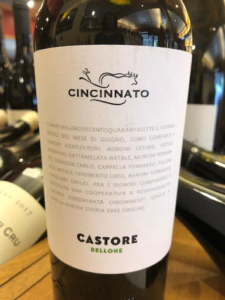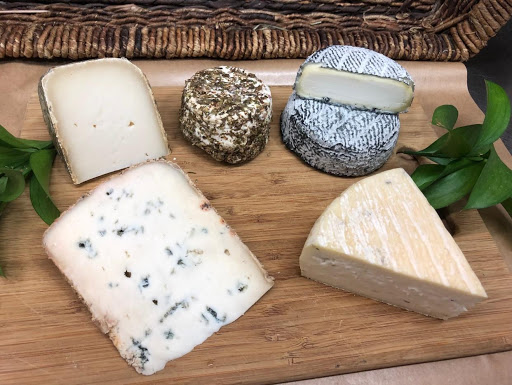Ladies and gentlemen, we interrupt our regularly scheduled wine programming to bring you this special report: August is National Goat Cheese Month! Of course, here at Paul Marcus Wines, we always jump at the chance to promote the most famous of all culinary pairings: cheese and wine!
In order to do so, we enlisted the help and expertise of the good folks at Market Hall Foods. (A big thank you to Sara and the cheese specialists at Market Hall, who showcased a variety of goat cheeses from France, Italy, and Spain.) Although this selection focuses on European cheeses, rest assured that there are also many delicious and artisanal goat cheeses produced locally and throughout the U.S. So many goat cheeses from which to choose, with so little time!
To complement this lovely cheeseboard, we selected a wine for each offering. When choosing a wine to pair with any cheese, the most important factors are the primary ingredients (goat, cow, sheep) and style of preparation (fresh, blue, washed, aged, etc.). For stress-free pairings, be sure to ask your cheesemonger which style of goat cheese they recommend, as the selection will most likely vary from day to day. And without further ado, let’s dive in!
Goat Cheese: Cevrin with Herbs
Produced in the foothills of Piemonte, Italy, this fresh goat cheese is primarily a goat’s milk cheese, blended with smaller amounts of cow’s and sometimes sheep’s milk. Light and creamy, the inherent freshness and primary flavors of Cervin make it the perfect vehicle to pair with fresh herbs from the region.

Goat Cheese: Fleur de Ré
This artisanal goat cheese comes to us from France’s Loire Valley. A tangy, creamy example of a bloomy-rind style of cheese, it’s coated in a very thin layer of ash before it undergoes aging, or affinage. It is accompanied by a very light sprinkle of fleur de sel from the Île de Ré, located off the west coast of France near La Rochelle. The use of both vegetable ash and fleur de sel enable this little puck of goodness to ripen more slowly and gracefully. A perfectly ripe Fleur de Ré will often exhibit complex notes of salt, earth, and fresh hay, with a noticeable creamy tang on the finish.

Goat Cheese: Truf di Capra
If you like Brie, then you must try Truf di Capra, an indulgent bloomy-rind, extra creamy Italian cheese produced in the foothills of Piemonte, Italy. This special soft cheese includes morsels of black truffle throughout, adding richness and earthiness. The addition of cow’s milk cream also ups the creaminess factor substantially.

Goat Cheese: Bleu de Chèvre
Bleu de Chèvre is unusual in that most blue-veined cheeses are produced from cow’s milk. Not to worry, as this example, produced by happy French goats, is delectable! In addition to the creamy texture and decisive nutty sweetness often found in blue cheeses, the use of goat’s milk imparts a bit of tang on the finish.

Goat Cheese: Garrotxa
This semi-hard, aged goat cheese hails from the Garrotxa area in Catalonia, Spain. It is a region world-renowned for the high quality and unique flavor profile of its goat’s milk. The exterior is most often covered in a hard outer casing of gray mold. Stick to the interior portion of Garrotxa, and you’ll be rewarded with a creamy cheese reminiscent of damp earth, nuts, and dried herbs, with a slightly salty finish.

Happy National Goat Cheese Month from Paul Marcus Wines! We’ll see you at the shop.







